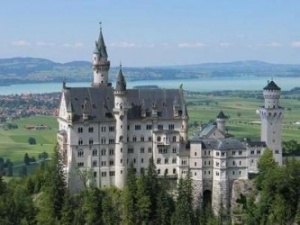German tourism continues to recover from flood damage

Good news for visitors who wish to visit Destination Germany in the coming weeks – it’s back to business as usual as flood waters continue to recede and the worst of the floods appear to be over.
Through the flood-hit cities and towns along the Danube, Elbe, Mulde and Saale rivers, transport and other essential infrastructures are once more running as normal and despite a few local restrictions, visitors will be able to enjoy all the attractions and activities Germany has to offer.
Towns such as Passau, which was considerably affected, has now been given the all-clear; the historic centre of Regensburg, Germany’s largest UNESCO World Heritage Site, was spared by floods and although the area on the river bank directly around the visitor centre and ancient Steinerne Bridge was at risk, it is now out of danger.
The situation around the flooded areas of the Elbe have improved significantly as the water levels in northern Germany continue to abate, but some warnings do remain in place where river dykes became heavily saturated and may pose a risk.
Some river regions, such as around the Moselle and Saar, were completely unaffected by the flood situation and continued to operate as normal throughout the crisis; in the south and east of Germany, the clean-up operation is nearing completion.
Along the Danube, Neckar, Elbe and Saale rivers, rail travel was initially affected and some restrictions are still in place; full information can be obtained from the Deutsche Bahn website.
Shipping traffic is also subject to partial delays in this region and recreational activities such as cycling were temporarily suspended - some routes remain partially closed.
Cross-river ferries in these regions are still liable to restrictions and cars are being diverted.
In Saxony, in the east, 95 per cent of available accommodation is open for business and most sights and attractions are fully operational.
There are no tourism restrictions in Upper Lusatia, in Saxony-Switzerland, in the Erzgebirge or Vogtland and surrounding landscape of the national park which borders the River Elbe.
The city of Dresden and its treasures were spared from the flood; the historical and beautiful city centre, with its shops and famous attractions remains fully open and visitors looking forward to seeing the Semperoper, Zwinger, Hofkirche, State Art Collections and Royal Palace (as just a few examples) will encounter no problems.
In Saxony-Anhalt, the tourist region of Harz in the west was completely spared from the flood, but elsewhere, restrictions do remain in place.
However, the affected cities have taken great measures to protect the cultural heritage of the region; in Wittenberg, the historical city centre and the Luther memorials were unharmed by the floods, as were the cathedral treasures in Merseburg and Naumburg.
Hotels and leisure facilities are all welcoming visitors as usual and any remaining road diversions are clearly signposted, enabling visitors to enjoy their time in Saxony-Anhalt with minimal restrictions.
Due to severe flooding of the Elbe, areas in Brandenburg are still affected, particularly in the north west of the region.
However, since the weekend, the all-clear was given to many of the river ways through the Spreewald, for example, where visitors can once more enjoy the traditional and timeless pleasure of discovering this unique network of waterways by punt.

